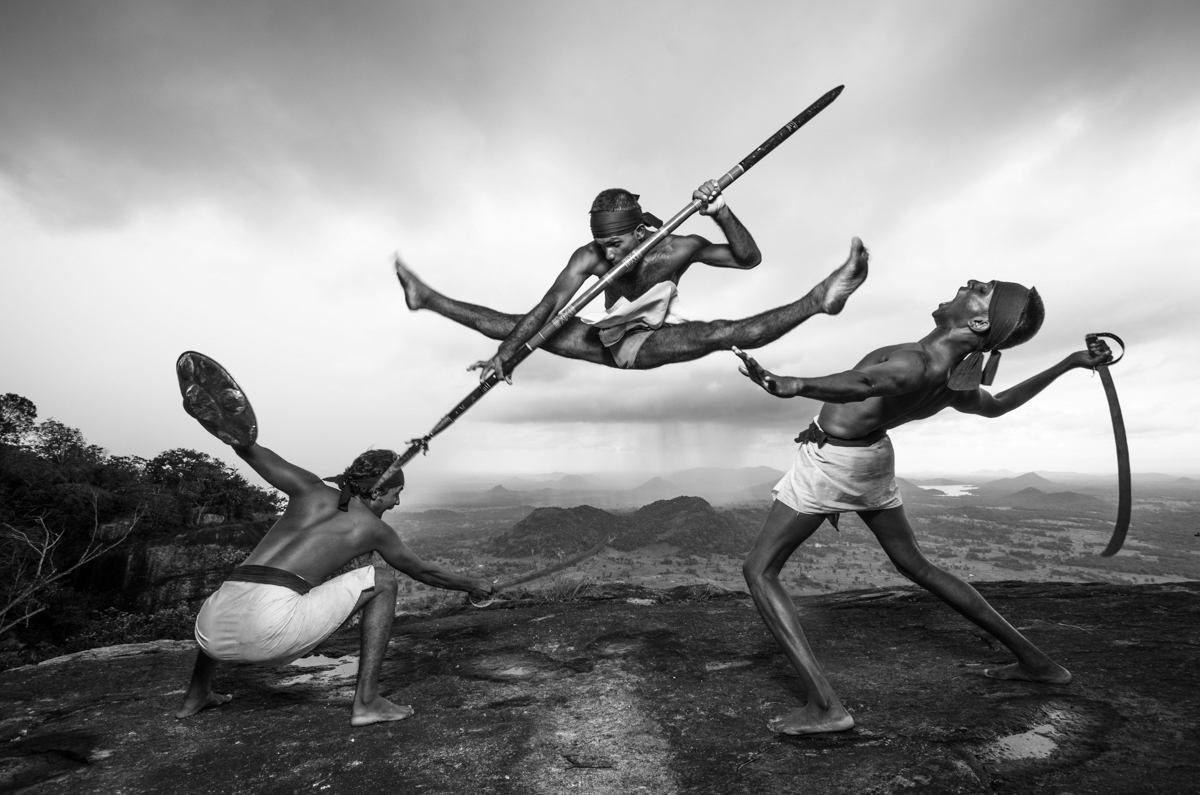Sri Lanka, a country with a rich history that goes back for over 5000 years tells us of great Martial Art that were enjoyed by the kings who ruled this wonderful land.
In the past ages, where the law of “survival of the fittest” prevailed, this tiny nation had to hold its own, mostly against the mighty India (South India”Chola Kingdom). The kings of India many a time thought to have this “Pearl of the Indian Ocean” to decorate their crowns and invaded the island. But invariably, each time, they were driven back. Such was the invincible might of the fighting techniques practiced by the people of Sri Lanka and they called it the ANGAM SATAN KALAWA (fighting art named ANGAM).
History of Angam
Sri Lanka, a country with a rich history that goes back for over 3000 years tells us of great sports that were enjoyed by the kings who ruled this wonderful land. Unarmed combat among champions had been the pinnacle of all events. In the past ages, where the law of “survival of the fittest” prevailed, this tiny nation had to hold its own, mostly against the mighty India. The kings of India many a time thought to have this “Pearl of the Indian Ocean” to decorate their crowns and invaded the island. But invariably, each time, they were driven back. Such was the invincible might of the fighting techniques practiced by the people of Sri Lanka and they called it the ANGAM SATAN KALAWA (fighting art named ANGAM ).
History reveals that under the directive of the kings in the ancient SRILANKA there were many ANGAM CLANS. Out of them “ SUDALIYA” CLAN and “MARUWALLIYA” CLAN which were formed in KANDY era were very famous. They were highly supported by the kings. But there were some other clans which practiced ANGAM in other areas that had schools to provide the fighters to the king and the country required. Ex- Kotte Klan, Ritigala Clan,Warnasuriya Clan and heads of the Angam schools held distinguished office in the king’s council.
However this great island fell under the British rule in 1815. It is important to mention here that was not after defeat by war, but due to falling pray to conspiracies planned by the British. Immediately thereafter the martial art schools appear to have been neutralized. Practice of martial art was prohibited and any who defied were persecuted. Thus began the era in which, an art that protected the people of the island for over 2500 years, was being forced to oblivion.
Our ancestors who knew the value of this great martial art, in a last bid to save the knowledge, have then turned into secretly preserving it within the families. Although part of the knowledge was still lost, this fortunately had saved Angam Kalawa totally being lost to the future generations. We are lucky to have teachers, still among us, who have the knowledge to pass on techniques in unarmed combat, grips, stick and sword fighting and techniques of a variety of other weapons.
Historical References on Angam
- MAHA WANSHAYA: This mentions about ANGAMPORA fighting which was used in the battle of king ELARA and KING DUTUGEMUNU.IT specially describes the fighting styles of GHOTAIMBARA AND THERAPUTHTHABAYA.
- MAHA WANSHAYA: This mentions that king PARAKRAMABAHU enjoyed a martial art display done by his soldiers in 12th century.
- CHULA WANSHAYA: This mentions that king 4 VIJAYABAHU enjoyed a fighting display of his army.
- RAJAWALIYA: This mentions how KONAPPUBANDARA (1 WIMALADHARMASURIA) defeated a Portuguese swordsman by using ANGAMPORA.
- MAGHA SALAKUNA KAWYA: This mentions about a fighting academy named as “AGE MADILLA” in Kandy in 15th century.
- JUGAN HANDERSAN: This writer who served for Dutch in 1669 has mentioned about SRILANKAN fighters in his book on SRI LANKA.
- DR.JOHN DEV: HE has mentioned about the “SUDALAIYA”CLAN and “MARUWALLIYA” CLAN who practiced ANGAMPORA.HE has specially mentioned about the deadly fights done in “URA LIDA” (Gladiator fighting arena)
- H.C.P BELL: HE merely describes about a fighting clan which was started by a lady named “GALABODA KUMARIHAMI”.Then he reports about the battle of MULLERIYA.
There are many more folk stories about this in various TEACHING CLANS around the island.

No comments:
Post a Comment